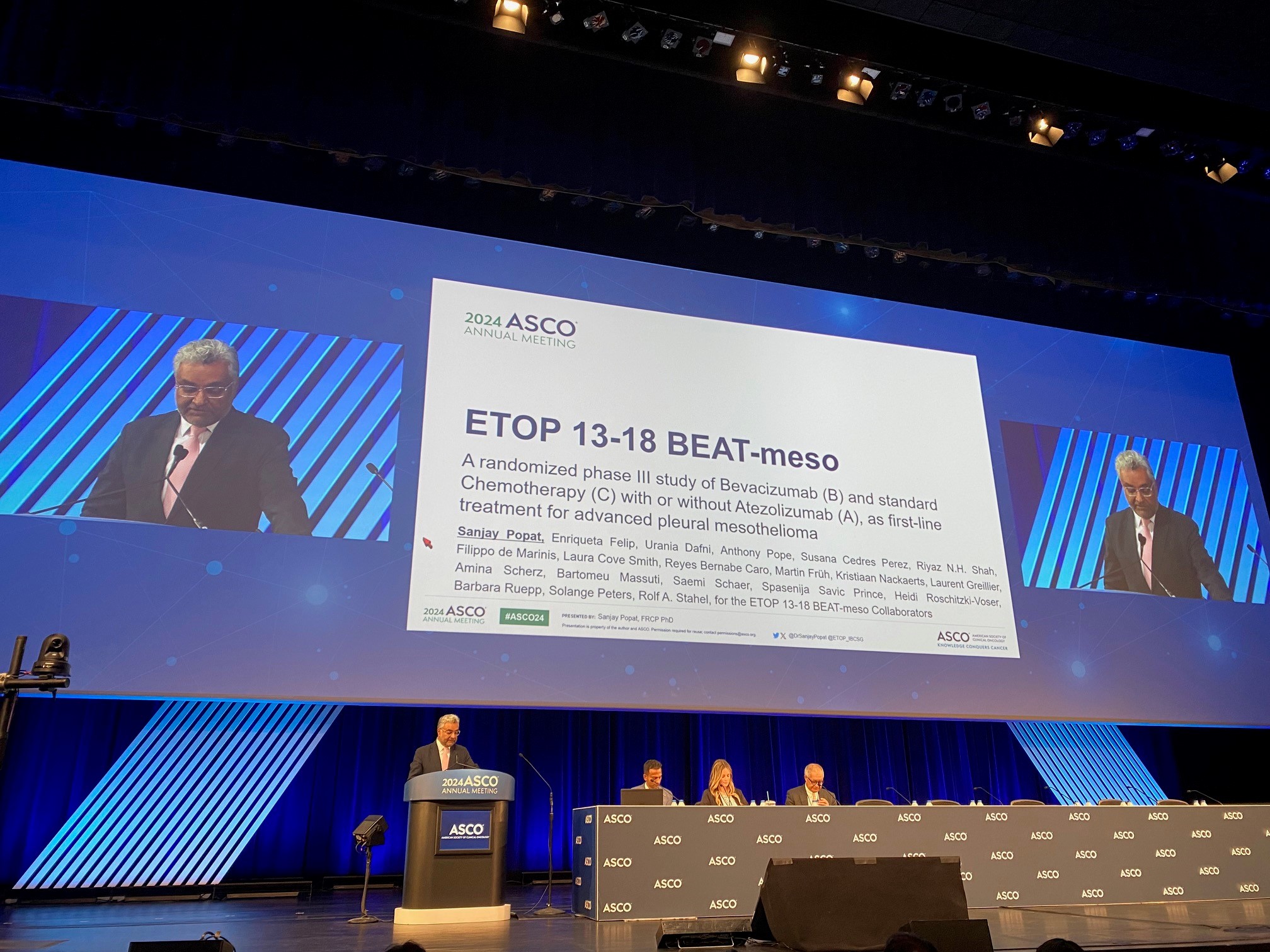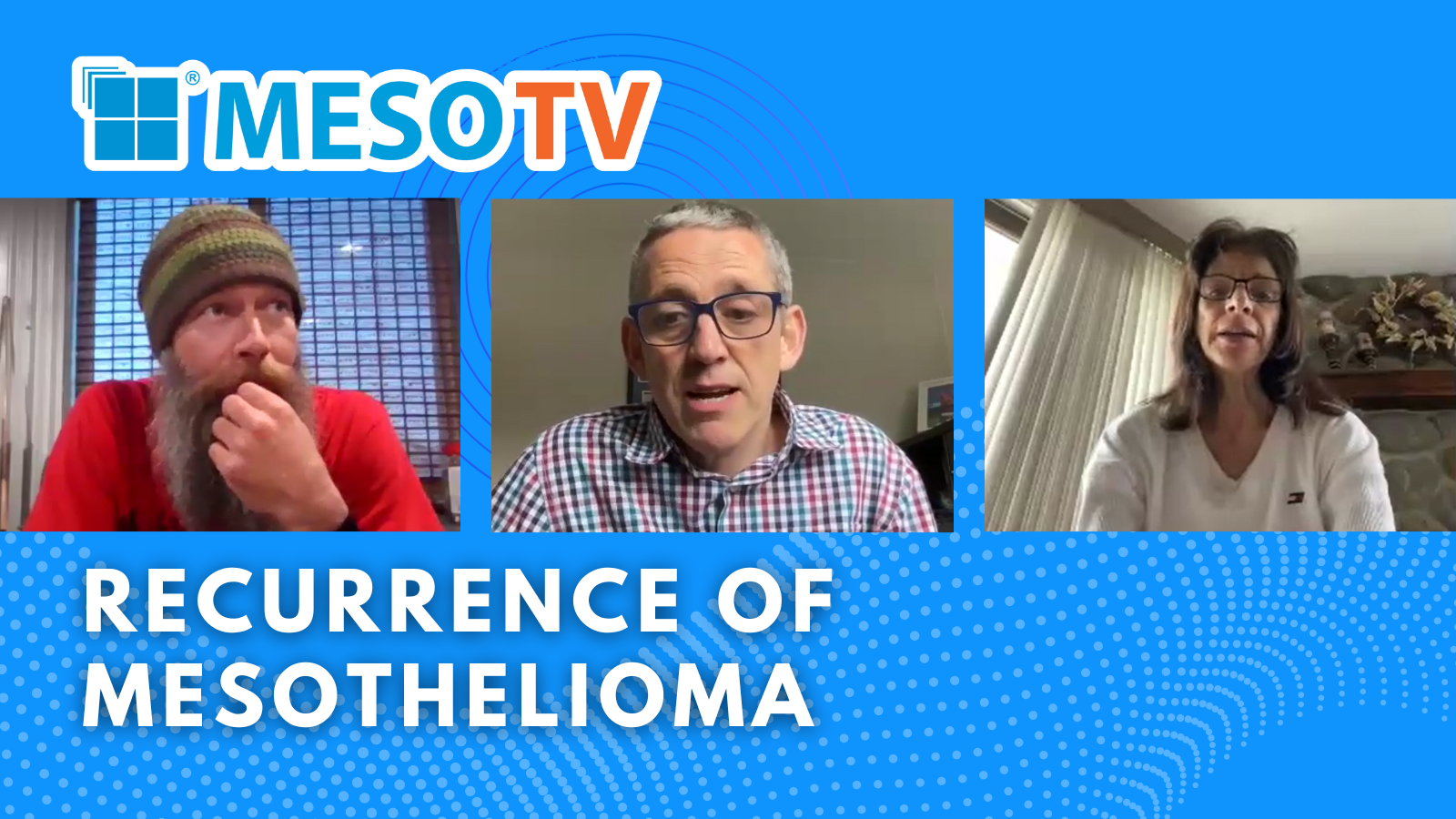by Christopher Graham
Well, a couple days later the biopsy results finally came back. The differential diagnosis for the way the stuff looked under the microscope was read by the pathologists as, “florid mesothelial hyperplasia versus peritoneal mesothelioma.” I looked all of this stuff up about 15 seconds after I got the phone call from the GI fellow with the results. I had never even heard of it, and I’m a freaking doctor. When you say, “mesothelioma,” everyone thinks (1) asbestos exposure and (2) it’s a lung cancer (technically, it’s a cancer of the lining of the lung, but that’s semantics).
There are a few points to be made here. Sometimes, even the pathologists – the gold standard in diagnosis for any biopsy (tissue sample) – can’t tell what’s going on, exactly. If you recall, this sample was taken via “fine needle aspiration.” The precise details of how it’s done aren’t important, but the consequence is that the pathologist only has cells to look at. They don’t get to see the overall architecture of the cells – how they line up with each other, how they’re arrayed, or stacked, or clumped, or whatever. With an FNA sample, you can just look at a bunch of cells that are randomly sampled and collected. So you’re limited to looking just at cell morphology. How does the nucleus look, how does the cell look, etc. But you don’t know how it stacks up with its neighbors, and that can be very important, sometimes, for determining if something is benign or malignant.
The “mesothelium” refers cells that line various body cavities. You have mesothelial cells in your belly cavity (the peritoneum). You have mesothelial cells in your chest cavity (the pleura). You have mesothelial cells around the lining of the heart (the pericardium) and even around the testicles (the tunica vaginalis). So you can get mesothelioma from any of those places. The pleura is by far the most common, and that’s the one most strongly associated with asbestos exposure.
So, with a little bit of background information, let’s revisit that path report, “florid mesothelial hyperplasia versus peritoneal mesothelioma.” Because it was an FNA, the pathologist couldn’t tell how the cells stacked with each other. He or she could only tell that the cells were abnormal in some way. And, because they couldn’t see the architecture, they had to give us their version of a differential diagnosis. Basically, the cells weren’t normal, but they weren’t sure if they were benign (hyperplasia) or malignant (mesothelioma). In short, we needed yet more information for a final tissue diagnosis. And you can’t treat anything without a tissue diagnosis. Doctors with too much free time on their hands have come up with pithy phrases about this exact point. “Tissue is the issue” or “you need meat to treat.”
This reasoned, calm understanding of what was happening is only possible in retrospect. At the time, I started freaking out pretty much right away. I frantically texted and paged one of the abdominal radiologists who I knew pretty well. She basically told me that was a crazy diagnosis, about as common as getting struck by lightning, and that it was more likely to be an error from the path lab than anything serious. Still, she said, she would talk to some of the surgical oncologists and see what they thought. I felt a little better.
Perhaps 20 minutes later, she called me back. She’s normally in a good mood and joking around with everyone. It’s one of the reasons all the residents really like her. But this time, her tone was muted and flat. She told me that the surgical oncologists were “pretty worried” about me, and that they wanted to get an MRI to look at everything more closely. I have a bit more access to hospital resources than the average bear, and for the first time in my life, I decided to actually take advantage of that. I called the MRI department and asked them if there was any way I could get on the schedule the next day. They were able to fit me in.
Then, I just kind of sat in my chair in stunned silence. Maybe for 5 or 10 minutes. I didn’t really know what to do. I had done all I could, at least for the time being. What was there to do now? Should I stay at work, and finish the day? Should I tell my attendings[ref]An “attending physician” is someone who has completed medical school and residency and is board certified to practice medicine independently. Fellows, residents, and medical students all work under the attending physician. Put simply, my attending is my boss.[/ref]? I mean, we didn’t have an exact, final tissue diagnosis yet, but the biopsy results were very concerning, and when surgical oncology says they’re worried, you should be too. This ain’t their first rodeo, son. I slowly came to the conclusion that I probably had cancer, and that I had to tell my fiancé, Nicole – the absolute love of my life – and my family, that I probably had cancer.
And that’s one of the first things you learn about cancer, once you know you have it: it’s not just your disease. I mean, it is, literally, but it affects everyone around you. Your closest loved ones, your friends and family, are dragged into this heaping pile of suck right along with you. And in some ways, they have it worse. At least you get the sympathy from figuratively everyone you know. They have to watch their loved one go through horrible, morbid medical treatment and then afterwards they have to actually live with the death of their loved one, too.
I didn’t quite know how to tell people. I went with something along the lines of, “I might be sick.” “Really sick.” “Like, peritoneal mesothelioma sick.” I thought the triple text message would be perhaps more noticeable than a single message. People were shocked and stunned of course. Asbestos was always the first question. No, to my knowledge I have never been exposed to asbestos, nor would my parents have brought such materials into the house. My dad’s a hospital administrator, and my mom’s a nurse. Now, in fact, assistant professor of nursing at the local state university. Strong work, mom!
I distinctly remember talking to Nicole on the day I told everyone. We had just gotten engaged on New Year’s Eve, just a couple months ago. If she stayed with me, she would be signing up for a lifetime of doctor’s visits, and repeat scans, and constant worry of recurrence. She might even be forced into a caregiver role, should things really go south. And she might be, quite frankly, widowed at a young age. That’s way more than most people would bargain for. And I knew it. So I asked her if she still wanted to “stay in the game,” so to speak. I would have understood if she had said no. Truly, I would have.
But, and this is why I put a ring on it as soon as possible, she said something to the effect of, “stop being a ridiculous idiot, our wedding date is set, so you better get planning!” I kind of knew that was going to be her response. I love her more than I ever thought it was possible to love another person, and I was 99% sure she felt the same way. Now, I was 100% sure. My dear reader, I hope you will grant me a small courtesy here, and allow me to address Nicole directly, just for a few words.
Nicole, you are the absolute love of my life. My source of unending strength. You are the most caring, thoughtful, and loving person I know. I still get a tightness in my chest when I think about you. I feel it on the inside. I know it in the core of my being. I love you.
Thanks guys, now back to the story! I also told, of course, my parents. My close friends. Everyone knew it was probably something like a mesothelioma, or, less likely, a weird sarcoma. Neither were good. My mom took it the hardest of all. She couldn’t talk to me on the phone for weeks without getting upset to the point of crying. She has told me about a thousand times now that this “should be happening to [her] and not [me].” Well, I didn’t think so then, and I still don’t, now. I wouldn’t wish this disease upon my worst enemy. And speaking of this horrible disease, the pertinent questions we had, at the time, were these: (1) how extensive is it? and (2) was what can be done about it? From the CT scan, we knew the right colon was involved, and there was the nodule in the duodenum but it was hard to see too much else. So, they wanted to get an MRI.
Let’s take another brief pause to talk about radiology tests again, just for some background information. People think that x-rays are the worst, then CT is better than that, and then MRI is the best of all (and that ultrasound is radiology’s red-headed stepchild). I mean, kind of. The part about ultrasound is definitely true. But really, you use the different modalities depending on what question you’re trying to answer. Radiographs[ref]The things everyone calls “x-rays” are really “radiographs.” The x-rays are the thing that makes the radiograph. The radiograph is the actual image you’re looking at. This semantical hair splitting is what is known as being, “technically correct,” which is the best kind of correct. Radiologists love being technically correct.[/ref] are actually still the best first test for a suspected broken bone, for instance, or for people with chest pain. As I said above, CT makes a density map of the body, and that’s useful for a lot of things, actually, too many to list here. But CT is usually where you start when you know you need advanced imaging. CT is the main workhorse of radiology departments. And, radiographs and CT scans both use ionizing radiation (the x-rays themselves) to generate the images. Ultrasound lives in its own little world, and is good for a few very specific things, and for doing procedures.
But MRI is a bit different. In an MRI, we have a really strong, always-on magnetic field. It’s actually a superconducting magnet. It turns out that when you put protons into this field, just-over-half of them will “line up” in the direction of the magnetic field (the other slightly-fewer-than-half face the other way). Once we get everybody “facing the same way,” we shoot a radio pulse into the protons. This basically knocks them over, and as they stand back up to face the way they were facing before, they send some radio wave energy back out, and we can listen for that. And the really neat trick is that protons stand back up at different rates depending on their environment, so a proton inside of a pathologic lesion is almost certainly going to “look” different than one in normal tissue. So it’s a lot easier to tell apart tissues of just a little bit of difference. Radiologists call this “contrast resolution.”
If it’s so much better, why not just get an MRI on everyone? They’re slow and expensive. CT is fast and cheap. These numbers are in the ballpark – though it’s a huge ballpark with lots of variability – but just so you have a sense of the difference, MRIs take 30-45 minutes and cost $2000 or more, versus 5 minutes (if that) and $400-800 for a CT. Again, there’s huge variability, but in general, those are the sorts of differences we’re talking about. It would add hours and hours of scan time, and thousands and thousands of dollars to an already costly system to MRI everyone. Plus, there are times when MRI isn’t actually the best test! That’s why we start, in general, with radiographs or CT and proceed to MRI if needed. There are of course also times when you go right to MRI or use ultrasound, but that’s something that your ordering doctor and your radiologist should hash out. It’s not really a problem to worry about from the patient’s standpoint.
The MRI certainly provided us with much more information than the CT scan. Unfortunately, that information was pretty much all bad. The MRI was as bad as the CT, if not worse. I hadn’t rotated through the abdominal MRI section yet, but I’d read thousands of belly CTs and I knew the basics of MRI from other rotations. There was very obviously disease everywhere. That much, I could tell. My real question was, “can we still go to surgery?” I’ve since reviewed my initial scan, after having been through the abdominal MRI rotation. In case you were wondering, it’s a disastrous train-wreck. But at the time, I didn’t know precisely what I was looking at. So I asked to look at my scan with the attending who was covering the outpatient site where I got scanned. He was an abdominal radiologist, too. But he was really quiet. He didn’t say almost anything, actually. He said, he wasn’t the best person to read that kind of a scan, and that we should probably wait and see what one of the other abdominal radiologists thought. He knew what was up.
The biopsy results, when taken in conjunction with the MRI findings, were all but diagnostic of malignant peritoneal mesothelioma. Two questions, however, yet remained: (1) what is the exact final diagnosis[ref]I know it sounds like we’ve been beating around the bush with the diagnosis. I keep saying things are “concerning.” The reason it’s important to have a very precise tissue diagnosis is that it can change the treatment plan. If you know it’s a super aggressive cancer, then maybe surgery isn’t a good idea. You might end up causing the patient complications and morbidity while simultaneously not extending their life. Alternatively, if there’s disease everywhere but it’s a relatively slow growing cancer, maybe surgery is a great idea. But to make those sorts of decisions, you have to know precisely what you’re dealing with. We basically knew it was peritoneal mesothelioma, but there are three different subtypes that have pretty different outcomes in terms of survival. We had to know which type it was.[/ref], including the subtype, and (2) was I a surgical candidate? So we had to stick some cameras in my belly to take a look and some tissue samples, a procedure known as a “diagnostic laparoscopy.” People who can’t get the surgery and have the cancer removed have an abysmal prognosis. Like, 6-18 months type of prognosis. Well shit.
Continue reading in the next installment by Christopher Graham here: Chapter 1 | Part 5: Something You May Not Know About Peritoneal Mesothelioma
Read the previous installment by Christopher Graham here: Chapter 1 | Part 3: Well, it’s not Crohn’s Disease




